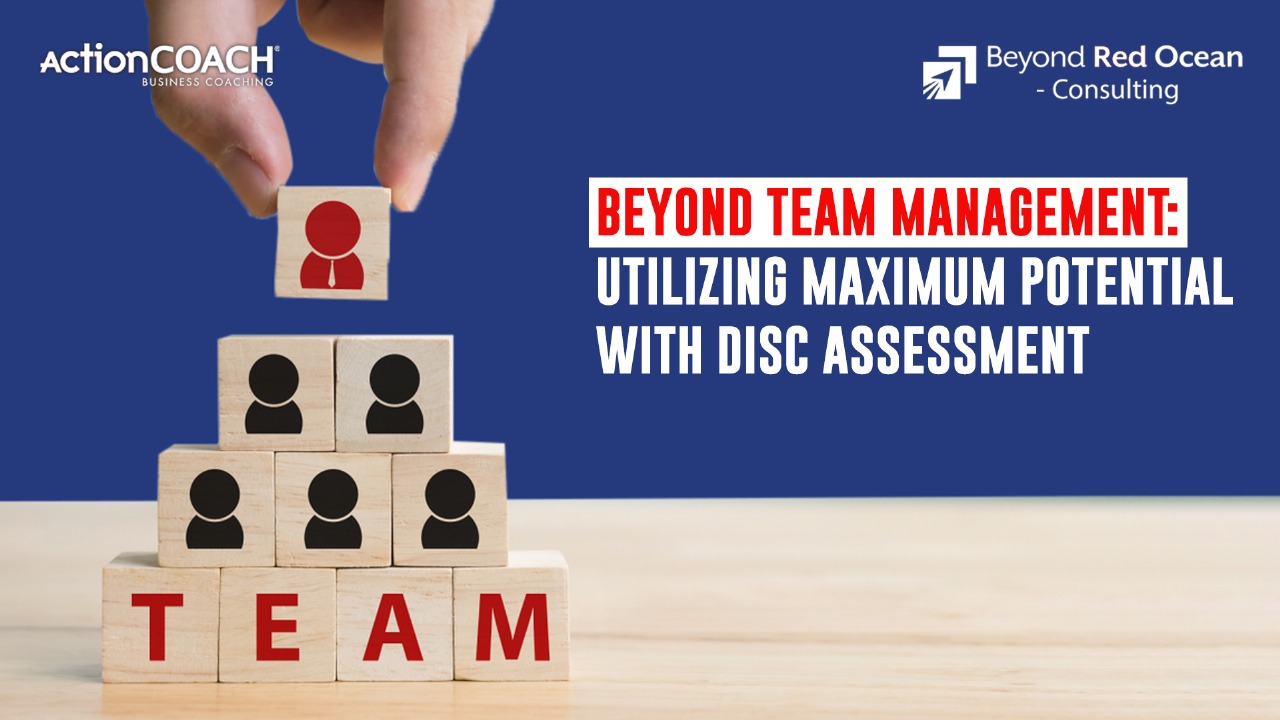
Beyond Team Management: Utilizing Maximum Potential With DISC Assessment
Have you ever wondered why some teams just "click" while others struggle to work together, despite having all the right skills? What if the secret to unlocking true team potential isn’t about managing tasks or monitoring performance, but about understanding the personalities that drive everyone?
This is where DISC Assessment comes into the picture. By decoding behavioural tendencies, DISC empowers leaders to move beyond managing a team to truly inspiring one. In this blog, we explore how DISC can transform team dynamics and leadership, taking you beyond conventional management practices into a world of elevated collaboration and growth.
What is DISC Assessment? A Tool for Behavioural Mastery
At its core, the DISC Assessment is based on a behavioural model developed by psychologist William Moulton Marston. It categorizes human behaviour into four key traits:
- Dominance (D): Individuals with high D traits are driven, results-oriented, and enjoy challenges. They are typically focused on achieving goals and overcoming obstacles.
- Influence (I): High I individuals are social, enthusiastic, and persuasive. They are excellent communicators and excel at building relationships.
- Steadiness(S): Those with high S traits are calm, supportive, and reliable. They value stability and collaboration and tend to be good listeners.
- Conscientiousness (C): High C individuals are detail-oriented, analytical, and focused on accuracy. They value structure and tend to follow rules and procedures.
Understanding these traits provides leaders with the insights needed to predict behaviour, foster collaboration, and drive performance.
Why Traditional Team Management Falls Short?
Conventional team management methods often prioritize uniformity and efficiency over individuality. While these approaches may yield short-term results, they frequently ignore the nuances of human behaviour, leading to disengagement and underperformance.
Consider a situation where a dominant manager overwhelms steady team members with constant urgency or where a conscientious employee’s need for detail is overlooked in a fast-paced environment.
Such mismatches can create friction, decrease morale, and hinder productivity. DISC addresses these gaps by offering a structured approach to understanding and leveraging behavioural differences.
For instance, consider this example;
A marketing team, driven by a high-energy, results-oriented manager, consistently pressured the team to meet aggressive deadlines. While this approach initially boosted short-term campaign performance, it gradually eroded the morale of a meticulous data analyst. The analyst, accustomed to thorough research and meticulous planning, felt constantly rushed and undervalued. Their anxiety grew, leading to increased errors and a decline in data accuracy. This ultimately impacted the team's ability to make informed marketing decisions, resulting in declining campaign effectiveness and a significant drop in client satisfaction.
How to Implement DISC in Your Organization?
Step 1: Assess Your Team
Start by conducting DISC assessments for all team members. Share the results in a collaborative setting to promote self-awareness and respect.
Step 2: Educate and Train
Organize workshops to educate your team about DISC. Role-playing exercises can help them apply insights to real-world scenarios.
Step 3: Apply Insights Strategically
Incorporate DISC findings into:
- Task assignments
- Performance reviews
- Conflict resolution strategies
Step 4: Monitor and Refine
Regularly revisit and update assessments to reflect changes in team dynamics and individual growth.
Real-Life Examples: The Power of DISC in Action
Let’s look at a global consulting firm that faced challenges in communication and project management across its diverse teams. Despite their technical expertise, teams in different regions struggled with misalignment and missed deadlines.
Upon implementing the DISC assessment, the leadership team discovered that regional cultural differences were at play, along with personality traits that caused friction.
For example, the D-types from fast-paced cultures were accustomed to rapid decision-making and wanted to push projects forward aggressively. Meanwhile, the S-types, who valued consensus and stability, were uncomfortable with the urgency and pushy style of the D-types. By using DISC to better understand these differences, the firm restructured their teams, assigning individuals with complementary traits to work together.
This not only improved the team’s dynamic but also led to faster project completion, better client satisfaction, and a more harmonious work environment.
Last But Not Least
Team management is no longer just about delegating tasks and maintaining order, it’s about tapping into the unique energy of each team member. The DISC assessment provides a roadmap for leaders to understand the individual dynamics within their teams, improve communication, resolve conflicts, and align strengths with organizational objectives. By channelling energy effectively, leaders can create a motivated, high-performing team capable of achieving outstanding results.
DISC assessment is an investment in the future of your team and organization. As businesses continue to evolve, the ability to understand and leverage personality dynamics will be a critical factor in staying ahead of the competition and ensuring long-term success.
Kalpana Mohan
Business Coach - ActionCOACH
Beyond Red Ocean Consulting, Mumbai
